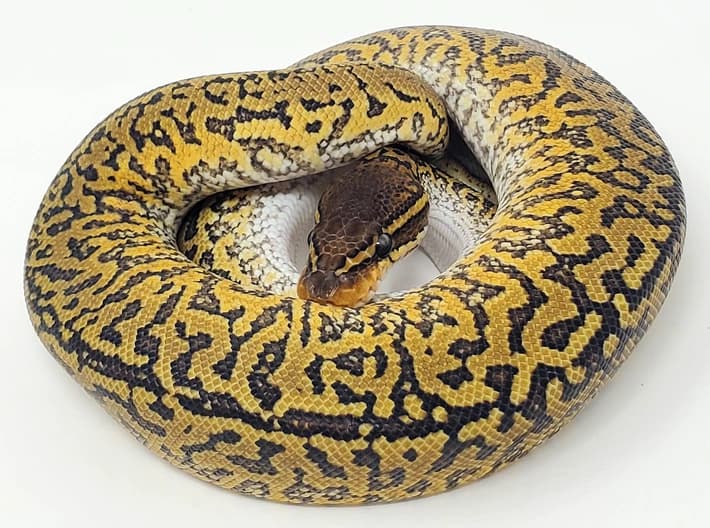Monsoon
This mutation changes pattern significantly and coloration to a lesser degree. Monsoon disrupts the pattern of a normal ball python into a shattered appearance across the body, usually with a medium-dark headstamp and lightening the background color. PLEASE NOTE THAT THIS IS A D RATED TEST - See below for Rating Description
First Produced By:
Dave Green
First Produced In:
2013
Gene Type:
Recessive
Complex:
Order through RGI:
Additional References
Special Thank You to Our Supporters
We couldn't develop our tests without the support of the community. These breeders helped us by volunteering to send their sheds in for our research.
About Our Test Grades
A+
Peer reviewed scientific paper detailing this mutation. Over 1000 homozygous, heterozygous, and normal samples have been run and match known genetics, and all known mutations are covered by our test.
Expected accuracy for this test is over 99.9%.
Expected accuracy for this test is over 99.9%.
A
Over 1000 homozygous, heterozygous, and normal samples have been run and match known genetics, and all known mutations are covered by our test.
Expected accuracy for this test is over 99.9%.
Expected accuracy for this test is over 99.9%.
B
Over 500 homozygous, heterozygous, and normal samples have been run and match known genetics, and all known mutations are covered by our test.
Expected accuracy for this test is over 99.5%.
Expected accuracy for this test is over 99.5%.
C
Over 200 homozygous, heterozygous, and normal samples have been run and match known genetics over 99% of the time. To date our test accounts for all known mutations that cause this morph, but we are still looking to see if there are any signs that another mutation exists that causes this morph.
Expected accuracy for this test is over 99%.
Expected accuracy for this test is over 99%.
D
Over 100 homozygous, heterozygous, and normal samples have been run and match known genetics over 80% of the time for at least one mutation. An additional unmapped mutation may exist for this morph. Either way, we are still working to optimize this test so that it will cover all known mutations for this morph.
Expected accuracy will vary and will be below 99% because not enough tests have been run at this time.
Expected accuracy will vary and will be below 99% because not enough tests have been run at this time.
E
The design and optimization for this test is in its final stages, but no working test exists at this point. Projected time to having a working test should be less than 2 months, unless it ends up that more sampling and sequencing is needed.
At that point the test would move down to being a Grade F.
At that point the test would move down to being a Grade F.
F
Sequencing is in progress and we expect to have a working test in 2-4 months, as long as more sampling and sequencing is not needed.

